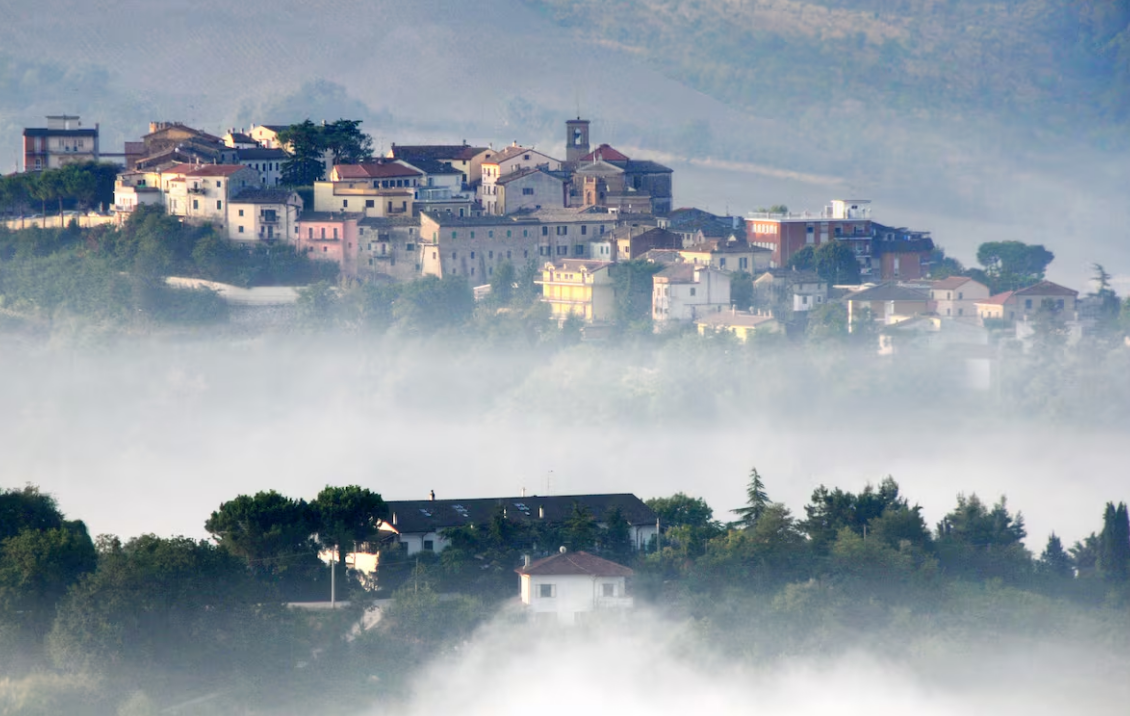Italy is often defined by its iconic cities—Rome, Venice, Florence—but beyond these familiar names lie regions of extraordinary charm that offer a more intimate and timeless experience. The province of Pesaro and Urbino, along the Adriatic coast, and the nearby city of Ancona are perfect examples. Here, history, culture, and nature blend seamlessly, offering travelers a mix of Renaissance grandeur, colorful seaside streets, and the quiet, contemplative rhythm of Italian life away from the usual tourist throngs.
The dual capital of the province—Pesaro and Urbino—has long been a subject of playful debate. Pesaro, with its beaches, hotels, and shopping streets, exudes a lively, modern energy, while Urbino sits inland, cloaked in quiet charm, with ancient palaces and a prestigious university. The contrast is striking, yet together, these cities encapsulate the diversity of the Marche region, stretching from the Apennines to the Adriatic Sea.
Urbino, often called “the equidistant city,” is a delight for travelers seeking tranquility. Far from bustling highways or crowded tourist paths, its streets exude a timeless quality. A walk through the Piazza del Rinascimento, facing the Ducal Palace, feels like stepping into a living Renaissance painting. The serenity and proportion of the architecture, commissioned by Duke Federico da Montefeltro, convey a sense of monumental elegance that photographs alone cannot capture. Urbino also houses the Galleria Nazionale delle Marche, home to the celebrated painting La città ideale, an exquisite example of Renaissance idealism. Climbing to the Albornoz Fortress rewards visitors with sweeping panoramic views of the city and surrounding countryside.
Despite its small size, Urbino offers culinary pleasures that rival its visual beauty. Cafés such as Basili and Caffè Degli Archi invite visitors to savor traditional treats like crescia, a bread enriched with lard and filled with local casciotta cheese and Carpegna ham. Heartier meals feature passatelli in broth, a dish codified by Pellegrino Artusi in the 19th century, whose culinary writings helped unify Italy more than some political revolutions of the time. Dining at spots like La Trattoria del Leone is as much an immersion in local culture as a culinary experience.
In contrast, Pesaro pulses with the colors and rhythms of the coast. Known for its connection to composer Gioachino Rossini, the city offers unique culinary delights like pizza Rossini, topped with hard-boiled egg and mayonnaise, sometimes forming a treble clef in homage to the musical genius. Beyond its gastronomic quirks, Pesaro boasts a scenic mile-long promenade lined with hotels and shops, vibrant streets, and the Piazza del Popolo, home to wine bars serving Verdicchio from the Umani Ronchi vineyards. For those seeking cultural experiences, the city maintains a strong operatic tradition in honor of Rossini, alongside traditional and modern eateries such as Osteria La Guercia and Lo Scudiero.
The Adriatic Sea between Pesaro and Ancona presents a contrasting, contemplative beauty. Unlike the bustling tourist spots of Venice or the Croatian coast, this stretch of water is modest, almost meditative, with misty mornings and open, seemingly endless beaches. The Adriatic here feels less about spectacle and more about mood, a quiet companion to the towns that hug its shore.
Ancona itself blends history, industry, and maritime life. Its skyline juxtaposes a Romanesque cathedral with shipyards and a striking triumphal arch from Trajan’s era. Historically, Ancona has served as a vital gateway to the East, a role that shaped its urban and cultural fabric. Unlike Venice or Genoa, its renown comes more from function than fame, giving the city a unique authenticity. Visitors can explore everyday life alongside historic landmarks—churches like San Francesco alle Scale, traditional cafés such as Alla Tazza D’Oro, and elegant pasticcerias like Moldavia, in operation since 1920.
The city’s topography adds yet another layer of charm. Cliffs, natural coves, sandy stretches, and the distant Conero Mountain create dramatic vistas visible even from the city center. The surrounding region produces excellent Montepulciano red wine, and wine lovers can enjoy it at establishments like the Umani Ronchi wine bar in the Grand Hotel Palace. Culinary exploration continues with seafood specialties such as brodetto, a local fish stew that varies daily, highlighting the Adriatic’s bounty.
Together, Urbino, Pesaro, and Ancona offer travelers a rich spectrum of experiences: Urbino’s Renaissance serenity, Pesaro’s seaside vibrancy, and Ancona’s maritime and industrial heritage. The Adriatic provides a contemplative backdrop, binding these destinations into a journey where history, art, food, and nature intertwine. For those willing to venture off the beaten path, this corner of Italy offers rewards as varied as they are profound—a reminder that the country’s charm is not limited to its most famous cities but thrives in its quiet, less-told corners.



